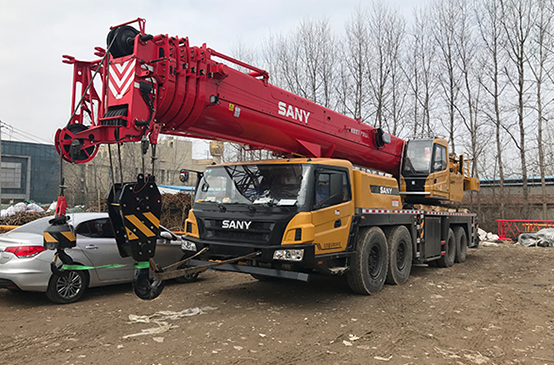The hydraulic oil leakage of crane is one of the common faults, which generally only occurs in internal leakage and external leakage. The reason for oil leakage of the crane must be checked immediately to avoid affecting operation safety! today, Crane rental company Let's talk about the reasons for the oil leakage of the crane and some simple solutions. Let's have a look!
1. The internal leakage of the crane is caused by the damage or aging of the static seal O-ring between the piston rod and the piston, and the failure of the dynamic seal between the piston and the cylinder wall.
The standard requirement for solving these two faults is that the piston should not move too far when it stops at a certain position. If it moves too far, it will be deemed as serious internal leakage, and the O-ring should be replaced in time; In case of internal leakage between the piston and cylinder wall parts, replace a new piston with an outer diameter a little larger than the original size, so as to make full use of the elasticity of the U-shaped seal ring to play the role of initial sealing, but the added value of the newly processed piston shall not be too large, otherwise the piston plug will not enter the cylinder.

2. The reasons for the crane leakage are: first, the O-ring at the joint between the cylinder block and the end cover is damaged or aged; The other is oil leakage between the relative moving surface of the piston rod and the guide sleeve.
A small amount of leakage during operation can reduce friction resistance, but oil will also leak when not in operation, which is a fault. The reason is that the Y-shaped seal ring between the piston rod and the guide sleeve is damaged, and the seal ring must be replaced if it is damaged or aged; If the piston rod is pulled, it is easier to solve the problem. You can use gasoline to clean the rod body. After drying, you can use 101 type AB glue to coat the pulled grooves and pits. Make sure that the grooves and pits face down to prevent glue loss. Finally, move the piston rod oil seal sleeve on the piston rod twice to scrape off the excess glue, It can be put into use after the glue has completely solidified; If the guide sleeve is cracked or severely worn, replace it with a new guide sleeve whose inner diameter is 0.15-0.20mm smaller than the original standard size, so that the Y-shaped seal ring can be installed and the wear of piston rod and other defects can be remedied.

